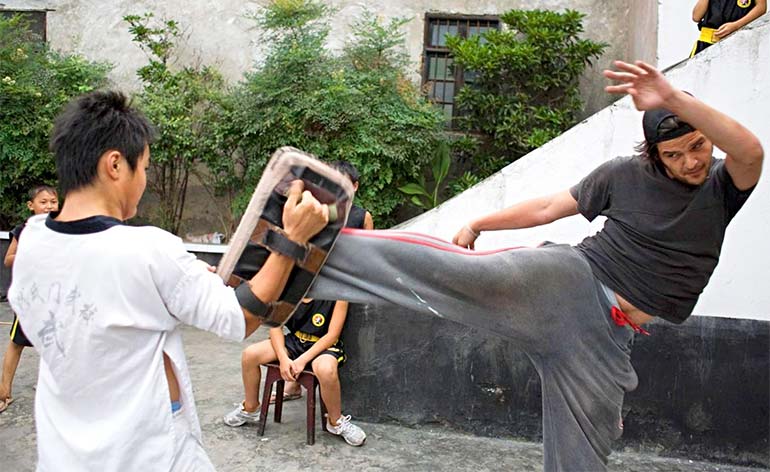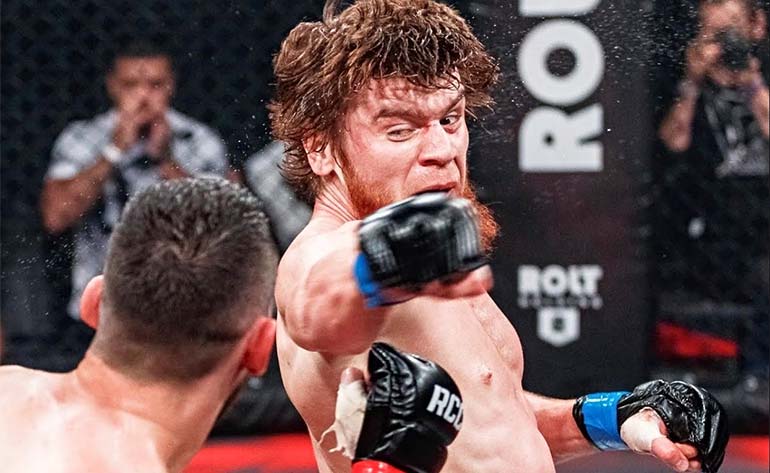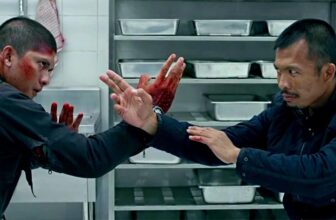
In recent years, action films have taken audiences on thrilling adventures filled with high-flying stunts, intense fight sequences, and epic battles. A crucial element that elevates the excitement and realism of these scenes is martial arts choreography. From the early days of martial arts films to the present, choreographers have played a vital role in shaping the way action sequences are portrayed on the big screen.
The Rise of Martial Arts Choreography in Action Films
Martial arts choreography has evolved significantly over time, influenced by various martial arts styles and the creativity of choreographers. The rise of martial arts choreography can be attributed to several factors:
1. Bruce Lee’s Impact: Bruce Lee, with his iconic films like “Enter the Dragon” and “Fists of Fury,” introduced the world to a new level of martial arts on screen. His philosophy of “Jeet Kune Do” and his impeccable skills inspired a generation of filmmakers and choreographers to push the boundaries of what was possible in action scenes.
2. Jackie Chan’s Innovations: Jackie Chan, known for his incredible acrobatics and comedic timing, revolutionized martial arts choreography. His Hong Kong-style action comedy brought a new level of creativity and stunt work to the genre, infusing humor and practicality into fight scenes.
3. International Influence: Martial arts styles from different regions, such as Muay Thai from Thailand, Capoeira from Brazil, and Taekwondo from Korea, have found their way into action films, adding diversity and distinct fighting techniques to choreography.
4. Advancements in Technology: The advancement of technology has allowed filmmakers to capture action sequences in more dynamic and visually stunning ways. Techniques like wirework, CGI, and advanced camera work have enabled choreographers to showcase intricate martial arts moves and intense fight choreography.
In the next section, we will explore the role of martial arts choreographers in action films and how they collaborate with directors, stunt performers, and actors to bring these exciting scenes to life. In the meantime, if you’re interested in exploring economics essay topics, we’ve got you covered as well!
Bruce Lee and the Birth of Modern Martial Arts Films
Bruce Lee’s Legacy and Influence on Martial Arts Choreography
When it comes to martial arts films, one name that stands out is Bruce Lee. Lee was not only a martial artist and actor but also a philosopher and innovator in the world of martial arts choreography. His influence in shaping modern martial arts films is undeniable, and his legacy continues to inspire filmmakers and audiences alike.
Bruce Lee’s unique style: Lee introduced a new style of martial arts choreography that combined different disciplines such as kung fu, boxing, and philosophy. His approach was characterized by fluid movements, lightning-fast strikes, and a focus on showcasing the beauty and effectiveness of martial arts techniques.
Incorporating real martial arts: Unlike previous martial arts films that relied heavily on exaggerated moves and wirework, Lee emphasized realism in his fight scenes. He wanted his choreography to reflect the true essence of martial arts and show the audience the practicality and skillfulness of the techniques.
Innovative camera techniques: Lee’s choreography was often accompanied by innovative camera techniques, such as tight shots and quick cuts, to enhance the intensity and impact of the fight scenes. These techniques added a sense of urgency and placed the audience right in the middle of the action.
A shift in storytelling: Lee’s films also brought a shift in storytelling within martial arts films. He believed that martial arts should serve a purpose beyond physical combat, and his films often included deeper themes of self-discovery, moral values, and personal growth.
Iconic Bruce Lee Fight Scenes
1. “Enter the Dragon” (1973): One of the most iconic martial arts films of all time, “Enter the Dragon” showcased Bruce Lee’s incredible skills in the final fight scene. The fight takes place in a specially designed hall of mirrors, adding an extra layer of complexity and visual impact.
2. “Fists of Fury” (1972): In this film, Bruce Lee portrays a martial artist seeking revenge for his master’s death. The fight scenes in “Fists of Fury” are a perfect example of Lee’s fast and powerful style, with each strike leaving a lasting impact.
3. “The Way of the Dragon” (1972): This film features the legendary fight between Bruce Lee and Chuck Norris in the Roman Colosseum. The choreography showcases the contrasting styles of the two fighters and solidified Bruce Lee’s status as a martial arts icon.
4. “Game of Death” (1978): Although the film was unfinished at the time of Lee’s death, it remains an important part of his legacy. The climactic scene, known as the “Tower of Death,” sees Lee facing off against multiple opponents on different levels of a pagoda, with each level presenting a new challenge.
Bruce Lee’s contributions to martial arts choreography revolutionized the genre and continue to inspire filmmakers and martial artists today. His unique style, emphasis on realism, and innovative camera techniques have shaped the way action films portray martial arts and create high-energy fight scenes that captivate audiences around the world.
Hong Kong Cinema: The Mecca of Martial Arts Choreography
Hong Kong has long been regarded as the mecca of martial arts choreography, producing some of the most iconic and influential action films in cinematic history. The combination of stunning martial arts skills, intricate choreography, and innovative camera techniques has captivated audiences around the world. Here are some key aspects of Hong Kong martial arts choreography that have shaped action films:
Hong Kong Martial Arts Choreography Styles and Techniques
- Wirework: Hong Kong cinema is known for its innovative use of wirework, where actors are suspended by wires to create gravity-defying fight scenes and impressive acrobatic stunts. This technique adds a sense of spectacle and fantasy to martial arts choreography.
- Fast-paced Action: Hong Kong films are famous for their fast-paced action sequences, featuring rapid punches, kicks, and agile movements. The choreography is meticulously coordinated, creating a visually stimulating and adrenaline-pumping experience for viewers.
- Blending Martial Arts Styles: Hong Kong choreographers often blend various martial arts styles, such as kung fu, tai chi, and wushu, to create dynamic and diverse fight scenes. This fusion of techniques adds depth and variety to the choreography.
- Incorporation of props: Props like swords, staffs, and nunchucks are frequently used in Hong Kong martial arts choreography, adding complexity and creativity to the fight scenes. The choreographers seamlessly integrate the use of these props into the action, resulting in visually stunning sequences.
Pioneers of Hong Kong Martial Arts Choreography
- Yuen Woo-ping: Yuen Woo-ping is widely regarded as one of the greatest martial arts choreographers in Hong Kong cinema. He has worked on numerous iconic films, including “Drunken Master,” “The Matrix,” and “Crouching Tiger, Hidden Dragon.” Yuen’s innovative choreography and ability to showcase the unique skills of each actor have made him a legendary figure in the industry.
- Sammo Hung: Sammo Hung is not only a renowned martial artist but also a highly respected choreographer. His work in films like “Enter the Dragon” and “In the Line of Duty” has pushed the boundaries of martial arts choreography and influenced generations of filmmakers.
- Jackie Chan: Jackie Chan’s unique blend of martial arts, comedy, and innovative stunts has made him a global icon. He is not only a talented actor but also a skilled choreographer, known for his meticulous attention to detail and commitment to safety in action sequences.
Hollywood Adopting Martial Arts Choreography
Over time, martial arts choreography in Hollywood films has evolved, incorporating various fighting styles and techniques to create visually stunning action sequences. Here are a few key developments in the evolution of martial arts choreography:
1. Blending Styles: Filmmakers started blending different martial arts styles to create unique and dynamic fight scenes. Combining elements of karate, kung fu, taekwondo, and more, choreographers have been able to showcase a wide range of techniques and movements.
2. Wirework and Special Effects: With advancements in technology, wirework and special effects have played a significant role in martial arts choreography. Actors can now perform gravity-defying moves, enhancing the visual spectacle of fight scenes.
3. Mixed Martial Arts Influences: The rise of mixed martial arts (MMA) has also influenced the choreography of Hollywood action films. MMA techniques, such as grappling and submission holds, have been incorporated into fight sequences, adding a sense of realism and intensity.
4. Collaborations with Martial Arts Experts: Hollywood has often sought the expertise of martial arts professionals to ensure authenticity in fight choreography. Working closely with martial artists and stunt coordinators, filmmakers have been able to create realistic and impactful action scenes.
5. Choreography as a Narrative Element: In addition to showcasing impressive fight sequences, martial arts choreography has also been used as a storytelling tool. Choreographers carefully craft fight scenes to reflect character development, plot progression, and emotional arcs, elevating the overall cinematic experience.
Jackie Chan: The Master of Stunts and Comedy
Jackie Chan’s Unique Approach to Martial Arts Choreography
Jackie Chan is undeniably one of the most influential figures in the world of martial arts choreography and action films. Known for his incredible stunts and comedic timing, Chan has created a unique style that blends martial arts, comedy, and innovative stuntwork. Here’s a look at his approach to martial arts choreography:
1. Creative Use of Props: Jackie Chan is famous for his creative use of everyday objects as weapons. From ladders to chairs, he turns anything he finds into a weapon to create dynamic and exciting fight scenes.
2. Incorporation of Acrobatic Movements: Chan’s background in acrobatics has greatly influenced his choreography. He incorporates flips, jumps, and other acrobatic movements into his fight scenes, adding an extra level of excitement and athleticism.
3. Emphasis on Realism: Unlike traditional martial arts films, Jackie Chan’s choreography focuses on realistic and practical movements. He often showcases the vulnerability and imperfections of his characters, making the action sequences feel more authentic and relatable.
4. Improvisation: Chan is known for his ability to improvise during fight scenes, adding spontaneity and unpredictability to his choreography. He often incorporates mistakes and bloopers into his final cuts, giving his films a unique and entertaining quality.
Combining Action, Comedy, and Innovative Stuntwork
What sets Jackie Chan apart from other martial arts choreographers is his ability to combine action, comedy, and innovative stuntwork seamlessly. He understands the importance of engaging the audience not just with thrilling fight sequences, but also with humor and wit.
Chan’s comedic timing and physical comedy skills add a lighthearted element to his films, providing a welcome contrast to the intense action scenes. His ability to make the audience laugh in the midst of a fight keeps them entertained and engaged throughout the film.
In addition to his comedic skills, Chan is renowned for his extraordinary stuntwork. He performs his own stunts, often risking his life for the sake of creating awe-inspiring and jaw-dropping action sequences. His dedication to pushing the boundaries of what is possible in action films has earned him the admiration of audiences worldwide.
Through his unique approach to martial arts choreography, Jackie Chan has left a lasting impact on the world of action films. His blend of action, comedy, and innovative stuntwork continues to stun and entertain audiences, cementing his legacy as a master of the genre.
Modern Martial Arts Choreography in Action Films
Contemporary Martial Arts Choreography Trends and Styles
Modern martial arts choreography has greatly evolved over the years, incorporating various styles and techniques to create breathtaking fight scenes in action films. Here are some of the prominent trends and styles in contemporary martial arts choreography:
1. Mixed Martial Arts (MMA) Influence: With the rise in popularity of MMA, action films have started incorporating elements of this combat sport. MMA blends various martial arts disciplines, such as Brazilian Jiu-Jitsu, Muay Thai, Boxing, and Wrestling, to create intense and realistic fight sequences.
2. Parkour and Freerunning: Parkour and freerunning, with their agile movements and acrobatics, have become an integral part of modern martial arts choreography. Actors and stunt performers seamlessly blend martial arts techniques with parkour movements, adding a dynamic and visually captivating element to fight scenes.
3. Wirework and Stunt Rigging: Wirework and stunt rigging techniques allow actors to perform gravity-defying moves, making fight scenes more visually impressive. By suspending actors on wires or using harnesses, choreographers can create the illusion of superhuman feats.
4. Weapons Mastery: Martial arts choreography in action films often incorporates weapon-based fights. Choreographers work closely with actors to ensure they have the skill and precision required to handle weapons effectively, adding an extra layer of excitement and danger to fight scenes.
The Integration of Different Martial Arts Disciplines
To create captivating and diverse fight scenes, martial arts choreographers often integrate different martial arts disciplines. By blending techniques from various styles, choreographers can create unique and visually stunning sequences. Some examples of martial arts integration in action films include:
1. Jeet Kune Do: Jeet Kune Do, developed by Bruce Lee, integrates techniques from various martial arts, including Wing Chun, Boxing, Fencing, and Judo. Its philosophy of “be like water” emphasizes fluidity and adaptability, making it a popular choice for choreographers.
2. Capoeira: Capoeira, a Brazilian martial art that combines elements of dance and acrobatics, is frequently featured in action films. Its dynamic kicks and spins add a visually appealing and acrobatic element to fight scenes.
3. Krav Maga: Krav Maga, a self-defense system developed in Israel, focuses on practical and efficient techniques. Its emphasis on real-world scenarios and quick, decisive strikes make it an ideal choice for choreographers seeking realistic and intense fight sequences.
4. Kung Fu: Kung Fu, a traditional Chinese martial art, offers a wide range of styles, such as Wing Chun, Tai Chi, and Shaolin. Choreographers often draw inspiration from these styles to create unique and visually captivating fight scenes.
The Role of Choreographers in Action Films
The Importance of Martial Arts Choreographers in Filmmaking
Martial arts choreographers play a crucial role in shaping the action sequences in films. They bring their expertise in martial arts and choreography to create visually stunning and realistic fight scenes. Here’s why their role is so important:
1. Designing Authentic Fight Scenes: Martial arts choreographers draw from their years of training and experience to design fight scenes that are authentic and believable. They understand the techniques and movements of various martial arts styles, allowing them to create sequences that capture the essence of the art form.
2. Ensuring Safety: Safety is a top priority when filming action scenes. Martial arts choreographers work closely with stunt performers to create sequences that are both visually impressive and safe to perform. They consider factors such as distance, timing, and the physical capabilities of the performers to minimize the risk of injuries.
3. Enhancing the Storytelling: Action scenes are not just about showcasing impressive moves, but also about advancing the storyline. Martial arts choreographers work closely with directors to understand the narrative and characters, ensuring that the fight scenes align with the overall story arc and character development.
Collaboration Between Directors, Stunt Performers, and Choreographers
The collaboration between directors, stunt performers, and martial arts choreographers is essential in creating captivating and dynamic action sequences:
1. Director’s Vision: The director sets the creative vision for the film, including the tone and style of the action scenes. Martial arts choreographers work closely with directors to understand their vision and bring it to life through choreography.
2. Stunt Performers’ Skills: Stunt performers are the ones executing the fight scenes on camera. Martial arts choreographers collaborate with them to utilize their skills and expertise, incorporating their unique strengths into the choreography.
3. Choreographer’s Expertise: Martial arts choreographers bring their specialized knowledge of martial arts and choreography techniques to the collaboration. They work with directors and stunt performers to create sequences that are visually appealing, technically sound, and true to the art form.
The collaboration between these three key roles is crucial in creating action scenes that captivate audiences and elevate the overall quality of the film.
Action films owe a great deal to martial arts choreographers, who bring their skills, creativity, and expertise to create exhilarating fight scenes. Their understanding of martial arts, collaboration with directors, and coordination with stunt performers ensure that every punch, kick, and block is executed with precision and intensity. So, the next time you watch an action film, take a moment to appreciate the efforts of the martial arts choreographers behind the scenes, whose work brings the thrilling fight sequences to life.
Conclusion
It is essential to recognize the artistry and skill involved in martial arts choreography. Behind every bone-crunching punch and gravity-defying jump is a team of talented individuals who have spent countless hours perfecting their craft. They blend athleticism, creativity, and technical expertise to create moments that leave a lasting impression on viewers.
As audiences, we can marvel at the dedication and skill of these choreographers and performers by appreciating the following:
1. Fluidity and Precision: The seamless transitions between moves and the precise execution of techniques showcase the mastery of martial arts choreography.
2. Creativity and Innovation: Martial arts choreography continues to push boundaries by incorporating new fighting styles, weaponry, and acrobatic maneuvers, keeping the genre fresh and exciting.
3. Storytelling Through Action: Martial arts choreography is not just about impressive physical feats; it also serves as a storytelling tool, conveying emotion and character development through action.






